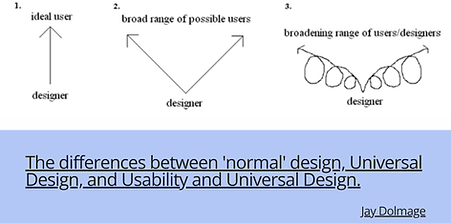Disability Pedagogy Lesson Planning
Equitable access requires recognizing students as human beings who are also active agents of their own learning. With this in mind, I intentionally moved away from the distancing nature of traditional lectures and instead focused on shifting power and authority between us as emerging educators and our fellow learners. I drew from Universal Design Learning principles, student-centered learning, and multimodality to make the class both accessible and dynamic.
To gauge students’ understanding, I let the conversation be our guide and intentionally kept an open and active dialogue by posing open-ended questions on key concepts. Creating an organic, open environment allowed students to process their thoughts, exchange ideas, and share personal connections to disability and access. The resultant conversations also sparked new lines of inquiry that applied theory to practice and showed students actively engaging in knowledge acquisition. Their thoughtful responses to our prompts and their peers coupled with their willingness to ask questions showed the evolution of their understanding of crip time and the basic framework of UDL.

01
Objectives
The primary objective of this lesson was to inspire students to critically examine their own pedagogical assumptions and the institutional frameworks surrounding disability and access. I wanted them to think (and to continue thinking beyond the classroom) about the kind of instructor they want to be instead of the traditional, standardized instructor academia says they should be. I chose to focus on two concepts to achieve this: crip time and UDL.
02
Quick Write 1
Through indirective and directive methods, I successfully encouraged students to critically examine normative time frames and the impact of inherently ableist practices, such as timed assignments and rigid deadlines, not only on disabled students but on all learners.
I started the conversation with a timed quick write (Practice 1) to introduce crip time and the unique relationship that disabled students have with time. As students shared their experiences, they reflected on how their individual perceptions of time differed from those of their peers. The seemingly inconsequential difference of just 30 seconds prompted them to think about "crip time" and sparked a conversation about deadlines and the standardization of timed assessments. The resulting discussion created ideal conditions as we moved to the reading journals (it also set the stage for the upcoming discussion on UDL and policy).


03
Sharing is Caring
I also had the writers of the two journals selections read their work out loud. The first journal was paired with a question related to the topic of crip time, while the second used a question posed within the entry itself. Having students read aloud not only helps with comprehension but also encourages them to think critically about the content, deepening their understanding of the material. This process engaged learners in a more active learning experience, allowing them to connect with the text and their peers.
04
Discussion
I introduced UDL and included some group discussion questions inspired by Jay Dolmage.





05
Objectives
I believe that students also began to critically reflect on what goes on a syllabus and why. Through the inclusive policy statement exercise (Practice 2), students questioned the exclusionary policy language that has shaped the academic norm. I was really excited by how much fun and engaging this activity turned out to be. The paired discussions provided an opportunity for students to identify key elements of access that were important to them and think through how they could build these values into their syllabi. This process encouraged them to consider how to create a safe and inclusive learning space, while also effectively communicating that commitment to their students. It helped ensure that their syllabi would reflect a more accessible and equitable environment, one that recognizes both disabled and able-bodied students as human beings.
06
Reflective Questions
Given the time constraints, I think we paced the content effectively, though there’s always room for improvement. There are several aspects I would try to approach differently in the future. One key area is the focus on accommodations in our discussions. While our conversations largely centered around accessibility for all students as if they were able-bodied, I believe we missed fully addressing the experiences of disabled students. It would be valuable to include an activity that explores the process of registering with SAS and evaluates the efficacy of the accommodations offered. This would help clarify the difference between equality and equity, better illustrating how equity is essential for true access. It also puts the focus back on disabled students and how they are often overlooked or subject to bias.
Additionally, I think there’s value in further discussing how power operates within different pedagogies and how various principles can be integrated to strengthen Universal Design (UDL). It’s especially important to demonstrate that UDL is a process-based pedagogy that works most effectively when combined with other pedagogies. This is something we definitely glossed over. Last, but not least, in a more perfect world, I would have liked to dedicate more time to the inclusive policy statement activity, as I believe it could have sparked deeper and more meaningful conversations.
